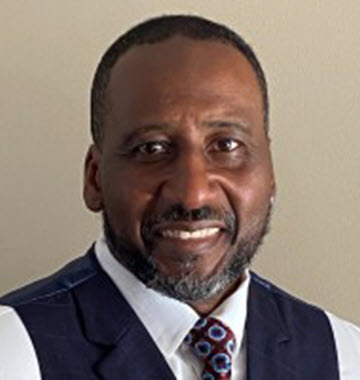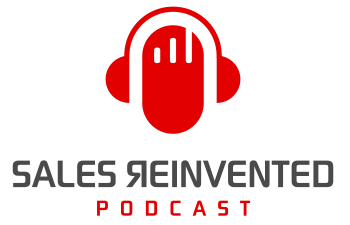
Episode #6 Greg Wells

Meet
Greg Wells
As a Senior Account Executive and Abrasives Solution Specialist at 3M, Gregory Wells manages and services Central and Southern Illinois, as well as the Greater St. Louis area. With extensive experience in the abrasives industry, he is dedicated to providing tailored solutions and exceptional service to clients in his region.
Our Mission Is To Change The Negative Perception Of Sales People
Our Vision Is A World Where Selling Is A Profession To Be Proud Of
My guest on the show is Greg Wells, a Senior Account Executive and Abrasive Solution Specialist at 3M. Greg has extensive experience navigating internal politics within client organizations and shares actionable strategies for mapping out decision-making processes, uncovering key influencers, and building strong champions inside accounts. You’ll also hear his stories from the field, get a checklist of practical dos and don’ts, and get powerful advice on staying persistent, providing value, and managing your time effectively.
Outline of This Episode
- [0:00] Best practice sales processes with Greg Wells,
- [3:31] Understanding executive interests and market positioning helps tailor communication
- [7:42] Steering buying decisions in your favor by building strong relationships with all stakeholders
- [8:52] Building trust and credibility across multiple stakeholders inside an organization, especially if those multiple stakeholders have competing interests
- [10:51] Plan collaboratively, involve partners and executives, research customers thoroughly, and consistently provide value.
Navigating Account Politics Matters
Every organization, regardless of size or industry, is shaped by internal power dynamics and unwritten rules. For sales professionals, recognizing and maneuvering through these complexities accelerates sales cycles and lays the groundwork for enduring customer relationships. By investing in understanding who truly holds power and influence within an account, salespeople can more swiftly address concerns, propose relevant solutions, and move opportunities forward with clarity.
Mapping Decision-Makers
Before even stepping foot on-site or dialing into a meeting, the research phase begins. Greg recommends a targeted approach:
- Leverage digital tools: Platforms like LinkedIn, company websites, and Salesforce are invaluable for identifying titles, responsibilities, and organizational relationships.
- Ask probing questions during the first meetings. Find out directly who will be involved in decision-making, nd what the process is for the account.
entails
But uncovering the hierarchy isn’t enough; salespeople need to note subtle but telling cues about influence. Sometimes, the operator on the floor chooses the tools, while at other times, the call comes from the C-suite. Being flexible, observant, and inquisitive sets the best apart.
Unraveling Stakeholder Motivations
Different roles mean different priorities. Buyers may focus squarely on price, production managers on efficiency, and executives on strategic initiatives or long-term return on investment (ROI). Greg emphasizes the importance of always considering the customer’s customer, understanding downstream needs or pressure points, and tuning your pitch to what each stakeholder genuinely values. This means getting beyond transactional conversations with purchasing and ensuring you engage with the financial, operational, and executive decision-makers as well. The message is to meet people where they are, and tailor your solution to what matters most to each.
Building Champions and Managing Blockers
One of Greg’s strongest pieces of advice is to find a champion, a respected, influential insider who advocates for your solution. True champions have earned credibility and trust within their own organization, increasing the likelihood of real impact. To cultivate this relationship, be genuine, transparent, and dependable in every interaction.
Equally important is dealing with internal blockers—those who resist change or have alternative allegiances. Persistence, honest dialogue, and ongoing engagement are crucial. Even when internal politics threaten to derail a deal (as in Greg’s own experience when key allies left a customer organization), staying engaged, offering value, and being ready for the moment when competitors stumble can bring you back into favor.
Navigating Account Politics
Successful account navigation starts with diligent planning and close collaboration with your internal champions. Continuously refining your strategy in partnership with these key influencers ensures that you remain adaptable as situations evolve. In-depth research into both your direct contacts and their end customers allows you to tailor your solutions for maximum relevance and impact. Above all, strive to provide genuine value in every touchpoint, whether through specialized knowledge, resource sharing, or proactive support, so that you become the go-to person clients trust to help solve their challenges.
Greg cautions against letting fear of making mistakes hold you back. Everyone experiences setbacks, and these can offer valuable learning opportunities. He also advises not to waste your time on accounts or contacts that consistently stall or fail to engage seriously—know when to shift your focus to manage your time effectively. Finally, it’s important not to become frustrated by inevitable obstacles; staying patient and persistent, even when faced with resistance or shifting internal dynamics, sets the foundation for long-term success and respect within your client organizations.
Connect With Paul Watts
Audio Production and Show notes by
PODCAST FAST TRACK
https://www.podcastfasttrack.com
Learn More About Greg Wells
Lessons from Experience: Can you share a time when understanding the political landscape within an account helped you close a deal? What was the key to your success?
– A customer that had 3M Belts in the account 20 years ago allowed to give me an opportunity to map their process after 6 months of persistent calling and follow up.
– I worked hard to understand the current process along with who the decision makers would be in the account.
– We discussed their decision-making process and what we needed to provide to allow them to make the best decision for their company.
– Once I understood all the factors that went into the decision-making process, I enlisted the help of a 3M AE.
– We tested and documented the process vs the current process.
– Suddenly we found out the landscaped had changed because the company was being purchased.
– We started from the process from the beginning.
– Who are the decision makers.
– What is important for them (Improved through put, life, less waste or price).
– As usual they said all of them were important.
– I had them list them in order of importance to gain a clear understanding of what will drive their decision.
– By having them create a list in order of importance allowed me to discuss price vs cost.
– We re-tested with 984F instead of 767F as we did before because their decision makers had changed.
– The first test was focused on the lowest priced product while the new decision makers focused on productivity and efficiency.
– I partnered with a BDM and won the business with no deviation.
Identifying Key Players: What are your top three strategies for identifying and engaging with the most influential stakeholders in an account?
– Once I understand what the customer is interested in, I will ask when we find the best solution for your application who else will need to involve making the change to 3M??
– Best case scenario what would be the expected documentable results you would like to see (life, speed throughput, waste reduction, less rework/rejects and safety concerns).
– When I get into the specifics the person needs additional information and now, I have found other stakeholders for this application.
– These additional stakeholders will now be added to the conversation.
– The last way I find additional stakeholders is to google the company or grab the cards from the front desk of additional high value executives.
Handling Resistance: What’s the most effective way to deal with internal stakeholders who are resistant to change or hesitant to support your solution?
– This is a tough one and is different in every account.
– Depending on your relationship and your confidence level.
– I try to gain commitment up front (prior to providing a solution).
– I want to understand their expectation up front to make sure that are reasonable and achievable.
– If we have an issue with a stakeholder after we have a proven solution, we set a meeting to understand if anything has changed.
– We discuss the Guaranteed Trial Order Process and other resources that we must overcome closing obstacles.
– I never shy away from a tough discussion and normally it comes down to price.
– If it is a large opportunity, I will not hesitate to get others involved.
– I frequently include my RSM, BDM and NSM to help me close tough accounts.
Essential Stakeholder Questions: What are three critical questions sales reps should ask to understand the true decision-making dynamics within an account?
– What does a successful outcome look like to you in this application??
– When we find the best solution for this application who else will we include to make the transition and are they available for a short meeting??
– Will you be willing to place a GTO today if the results align with our expectations we discussed at the beginning of our meeting??
Future Trends in Stakeholder Management: How do you see the role of stakeholder mapping and political awareness evolving as business decision-making becomes more complex?
– I think this is one of the most important things that we can do to accelerate closures.
– Early in my career I was excited to get any meeting and would provide a solution but struggled to get the opportunities closed due to a poor understanding of the decision-making process.
– This will continue to be difficult as end-users consolidate.
– Buying decisions may not be made locally and moved to a corporate purchasing model.
– Don’t be afraid to utilize your resources!!!
Connect with Greg Wells
Greg Wells LinkedIn URL – https://www.linkedin.com/in/gregory-wells-73aa7013/
Share This Episode, Choose Your Platform!
